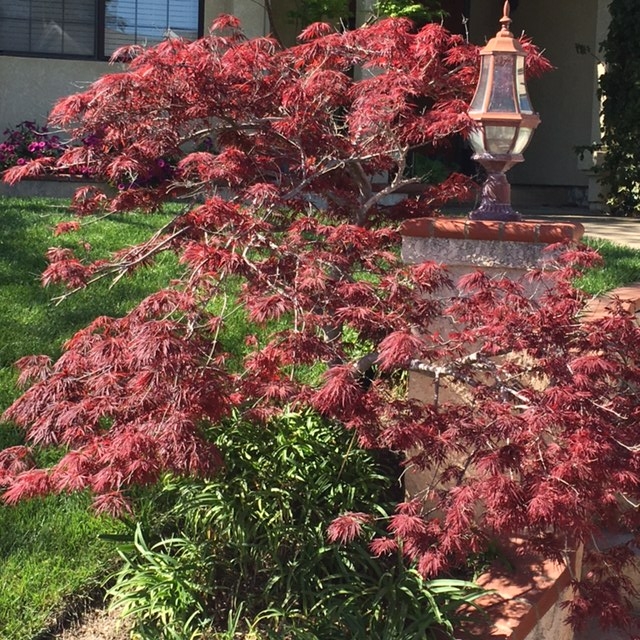Spring Planting
By Leslie E. Stevens UCCE Master Gardener
With all this rain, I can't wait to start planting. Any suggestions? Mary B. San Luis Obipo
This spring will be a time to celebrate! Winter rains have not only greened our landscapes and filled our reservoirs, but leached salts from our soils and nourished our plants after six years of punishing drought.
And what better way to celebrate than planting a spring garden! Our county enjoys a long growing season -- March through November in warmer parts of the county, and April through October in colder North County and interior valleys. The following are tips to get you started.
Trees & Shrubs – While autumn generally is considered the favored time to plant many trees and shrubs, subtropicals such as citrus and avocados are exceptions. Plant these frost-sensitive trees in spring so they become well established before facing next winter's chill.
This month is the last chance to plant bare-root trees and shrubs in cold winter areas.
Fruits & Vegetables
March is your earliest opportunity to plant perennials such as bay, oregano, sage and yams, as well as artichoke and asparagus crowns and rhubarb rhizomes. Wait until April to plant veggies, fruit and herbs such as corn, cucumbers, eggplant, fresh bean, horseradish, peppers, potato, pumpkins, summer squash, tarragon, thyme, tomatoes, watermelon and zucchini. Likewise, you can start seeds indoors now for many warm-season crops and transplant outdoors in 6-8 weeks.
March is also the last opportunity to plant cool-season crops such as beets, carrots, chard, kale and lettuce outdoors.
Flowers & Ornamentals
Plant bulbs, rhizomes and tubers of perennials such as agapanthus, amaryllis, cannas, dahlias, daylilies, bearded and Dutch irises, and gladiolus for spring and summer color. Local nurseries should have an increasing stock of spring annuals, flowering perennials and shrubs. Look for drought-tolerant favorites such as sweet alyssum, cosmos, coreopsis, gaillardia, lavenders, Indian Hawthorne, scabiosa and yarrow.
Before heading to the nursery, make sure to weed planting beds and amend soil with compost or organic fertilizer to give new plantings a healthy start. Install drip irrigation if you haven't already done so. You're now ready to plant, apply mulch and enjoy the future fruits of your labors.
Visit http://arboretum.ucdavis.edu/arboretum_all_stars.aspx for a list of 100 plants recommended for California gardens by staff of the UC Davis Arboretum.
